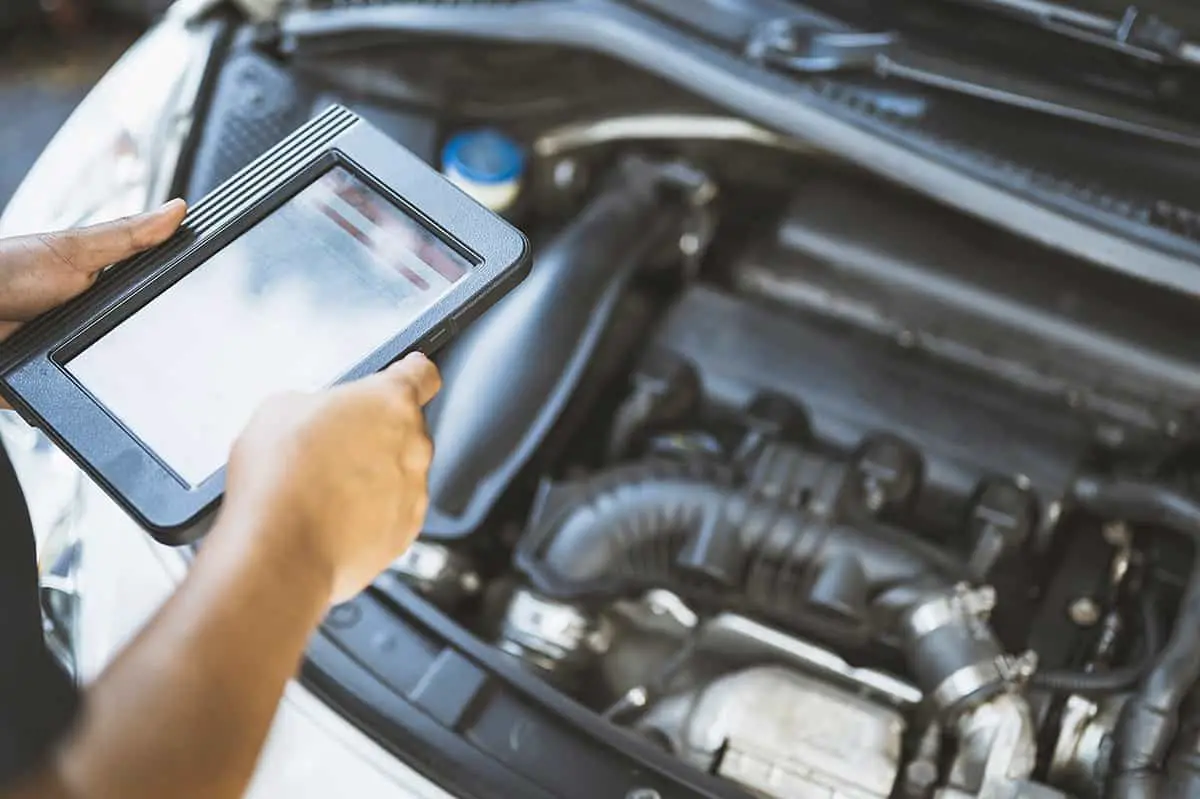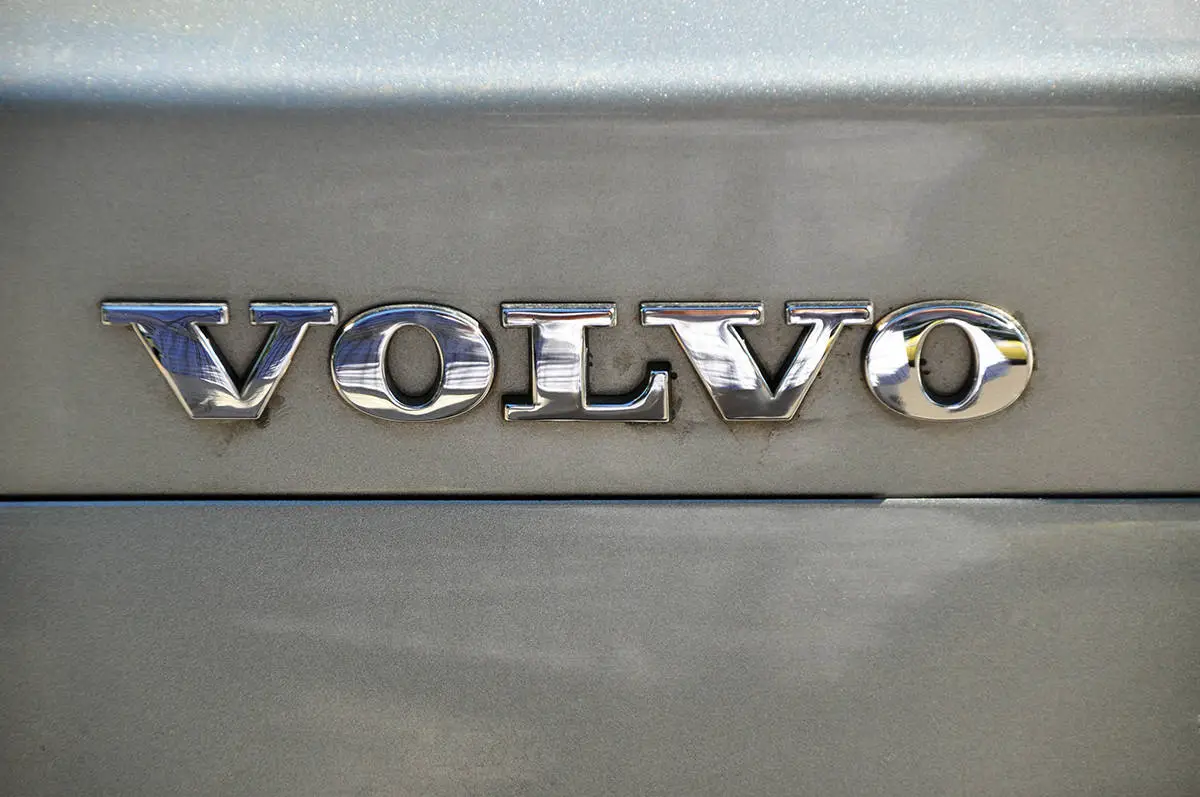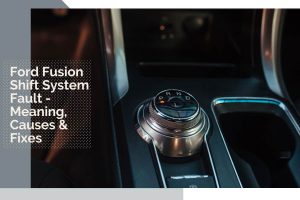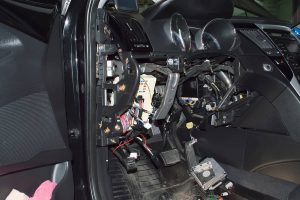In the past, mechanics had to resort to “brute-force diagnostics” to figure out what was wrong with a car. In retrospect, it would have been helpful to have a Volvo fault codes list as it would allow mechanics to immediately identify the underlying problem.
Modern cars are able to self-diagnose engine and other problems, thanks to a wide range of sensors, a development that has occurred over the past 50 years thanks to the introduction of engine computers (also known as ECUs, ECMs, and BeCMs, among others).
Volvo trouble codes in the vehicle’s computer relay this information to the mechanic, who can then focus on pinpoint repairs rather than guesswork.
Volvo Fault Codes List
It’s not as difficult as you might think to learn all of the Volvo fault code lists, especially when compared to what mechanics had to do only a few short decades ago.
The following table will provide some of the more common error codes and what they mean. Please note that this list is incomplete as many error codes very rarely show up until your Volvo is nearing the end of its life cycle.
| Error Code | Error Designation and Meaning |
| P0010 | A mismatch in mechanical timing between the crankshaft and bank 1 camshaft has been detected by the engine control module (ECM), as indicated by this code. |
| P0011 | The ECM has detected that the intake camshaft in cylinder 1 of the engine is more advanced than the ECM has instructed. |
| P0013 | If you get this error, it’s because the ECM has detected a problem with the open or short circuit in the OCV for the exhaust camshaft in bank 1. |
| P0014 | The ECM has detected that the bank 1 exhaust camshaft is more advanced than the commanded position, as indicated by the presence of this code. |
| P0102 | The computer in your Volvo V40’s engine has detected an issue with the mass airflow sensor and set code P002F. |
| P0113 | This code means the intake air temperature (IAT) sensor has a voltage reading that is too high. |
| P0128 | This error message indicates that the engine coolant temperature is too low. If your ECM or PCM is displaying this message, it means that the engine is operating at a temperature lower than normal. |
| P0135 | The ECM has performed an O2 sensor heater circuit test and identified a problem with the circuit for sensor 1 in bank 1. |
| P0171 | This code suggests a problem with the first bank of the engine’s fuel system or a vacuum leak in the area. |
| P0200 | Whenever the ECM displays the code P0200, it indicates that it has found a problem with the fuel injector circuit. |
| P0202 | The ECM has detected a problem with the injector circuit serving cylinder 2. Once the ECM registers a voltage or resistance that is not within its normal range, a code is stored in memory. |
| P0300 | A misfiring cylinder is likely the cause of the P0300 engine code. |
| P0401 | DTC P0401 is the “Exhaust Gas Recirculation Flow Malfunction” trouble code. |
| P0420 | If your car displays the P0420 error code, it means the efficiency of the catalyst system is below a preset limit. |
| P0430 | When the catalytic converter fails to do its job properly, as indicated by error code P0430, the vehicle emits more harmful pollutants than usual. |
| P0440 | A problem with the EVAP system has been detected, as indicated by this code. The ECM has detected a problem with the vapor pressure sensor or a leak in the fuel tank vapor system. |
| P0500 | If you get the P0500 DTC while diagnosing your car, it means the speed sensor has malfunctioned. |
| P0505 | When the Idle Air Control (IAC) is malfunctioning, as indicated by error code P0505, the engine may stall when coming to a stop because of abnormally low or high idle speeds. |
| P0600 | Scan tool error code P0600 indicates a problem with any of your vehicle’s many sensors that feed data to the ECM. |
| P0601 | P0601 is an “Internal Control Module Memory Checksum Error” code. |
| P0602 | A faulty PCM driver, faulty programming, or a loose electrical connection are the most likely causes of error P0602. |
| P0603 | If your vehicle’s PCM reports a P0603 error, it means the Keep Alive Memory has encountered an unexpected failure (KAM). |
| P0604 | This code indicates ECM memory corruption on the vehicle’s controller area network (CAN). |
| P0605 | The P0605 Volvo code is stored in the ECM and the MIL lights up if a problem is detected. |
| P0606 | The P0606 error code indicates a problem with the electrical system’s power control module. |
| P0607 | The error message indicates that the ECM is not functioning as intended due to a problem, such as a lack of power or memory. |
| P0627 | A malfunction in the fuel pump A control circuit will register as error code P0627 in the vehicle’s memory. |
| P0628 | There is a fault in the control circuit for fuel pump A. |
| P0629 | The fuel pump or pump relay is damaged. |
| P0634 | The vehicle’s control module receives a temperature reading from any component that indicates a catastrophic failure is imminent. |
| P0638 | Issues with the vehicle’s bank one throttle actuator’s control range. |
| P0642 | The ECM has detected a lower voltage than expected for the “A” circuit. |
| P0643 | The ECM has detected a higher voltage than expected for the “A” circuit. |
| P0645 | The A/C compressor driver may be defective. |
| P0646 | The A/C compressor driver is not receiving a high enough voltage. |
| P0647 | The A/C compressor driver is not receiving too high of a voltage. |
| P0650 | The Malfunction Indicator Lamp (MIL) Control is defective. |
| P0668 | The engine or transmission is at a potentially harmful temperature. |
| P0669 | The internal temperature sensor for the ECM is too high. |
| P0700 | Your car’s TCM (Transmission Control Module) is malfunctioning. |
| P0720 | The Output Speed Sensor Circuit is malfunctioning. |
| P0727 | The TCM sensor is not sending signals to the ECU. |
| P0730 | Automatic transmission has an incorrect gear ratio. |
| P0805 | The Clutch Position Sensor Circuit is malfunctioning. |
| P0806 | The computer has detected a problem with the clutch position sensor and/or sensor circuit. |
| P0807 | The Clutch Position Sensor Circuit is too low. |
| P0808 | The Clutch Position Sensor Circuit is too high. |
| P0841 | The Transmission Fluid Pressure Sensor is registering abnormal pressure levels. |
| P0863 | The TCM cannot send signals to the ECU and vice versa. |
| P1124 | There is a problem with the engine control system, possibly a shorted or open circuit. |
| P1136 | There is an open or shorted circuit in the intake valve timing control solenoid blank 2. |
| P1167 | The rear heated oxygen sensor is malfunctioning. |
| P1480 | The fan clutch assembly is malfunctioning. |
| P1481 | The fan clutch assembly harness is open or shorted. |
| P1482 | The fan clutch assembly harness’ signal is too high. |
| P1526 | The ECM is registering an internal fault in the torque signal. |
Where to Look for Volvo DTC?
A DTC (diagnostic trouble code) is the error code that appears on your Volvo. It will indicate what’s wrong with your car, so you won’t have to disassemble the whole thing and check each and every part individually.
So, where do you look for the DTC? You will need to purchase a DTC scanner for your Volvo. After you have one, plug it into the connector of your car. Here’s what you need to do:
Look for a connector in the footwell of the driver’s seat. There may be hatches or plugs keeping the connector hidden from view. In many cases, a yellow sticker is a clearcut sign that the connector is nearby.
Turn your car on to accessory mode by turning the key in the ignition to its second position. This will power on all of the accessories in your Volvo without turning the engine on. If your car has a button ignition, press the button without stepping on the brake pedal.
Now, plug in the scanner and allow it to boot up. It will take a few moments for it to register an error code on the display. Some scanners will have you input your car’s make and model in order to pull up the right error codes.
Types of Error Codes

There are 4 main types of error codes to look for-B, C, P, and U.
- B-codes refer to body-related issues, which are generally found inside the passenger compartment. B-codes usually mean that there’s a problem with the driver’s assistance system, convenience features (heated seats, power sets, etc.), as well as safety features (airbag).
- C-codes (chassis) cover almost everything outside the passenger compartment, specifically regarding brakes, steering, and suspension systems.
- P-codes are error codes related to the powertrain of the car. This is limited to the engine, transmission, and anything associated with the drivetrain and its accessories.
- U-codes mean network and vehicle integration problems, such as the main computer and its numerous sensors.
Can You Get the DTC Without a Scanner?
In some Volvo models, the information center in front of the driver will have a DTC readout, showing only the most common error codes. To pinpoint the exact problem, you will need a DTC or ODB-II scanner that provides an exact error code.






